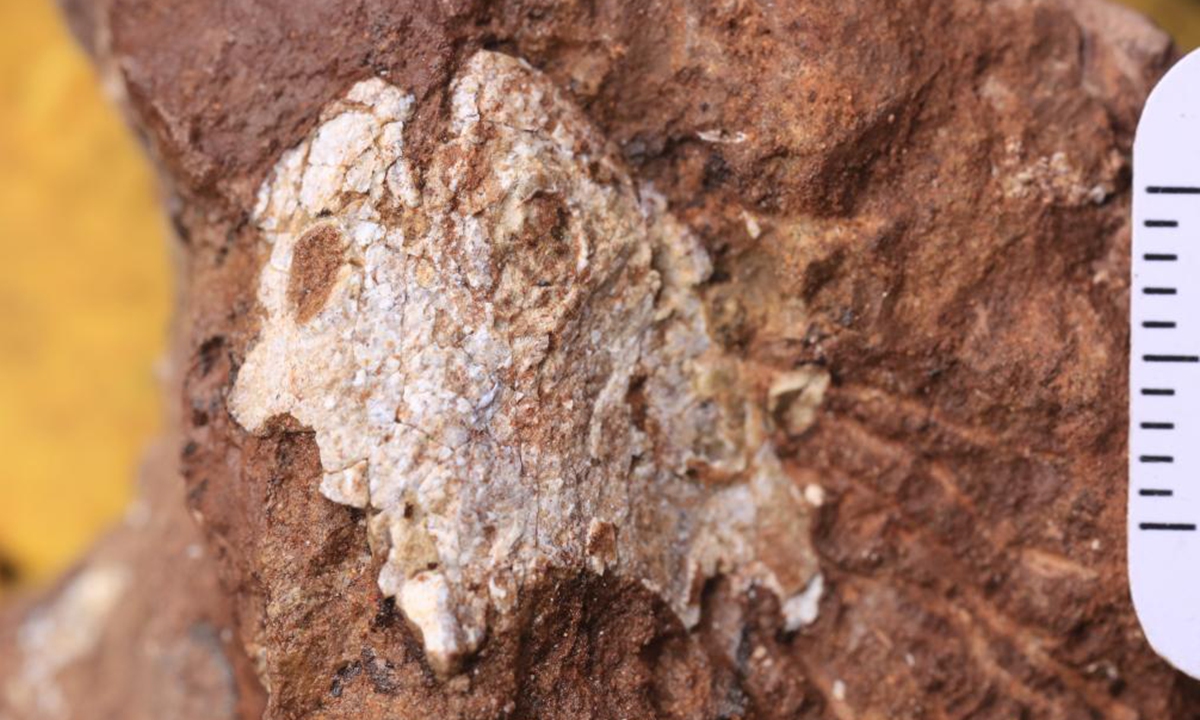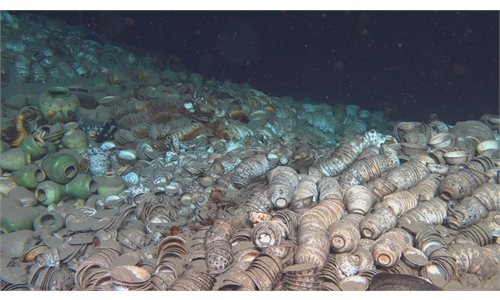ARTS / CULTURE & LEISURE
438m-year-old fish fossils discovered in Jiangxi Province

Photo: Xinhua
A research team from the Institute of Vertebrate Paleontology and Paleoanthropology of the Chinese Academy of Sciences has discovered a new species of Jiangxialepis (Galeaspida) in the Silurian strata, which dates back to approximately 438 million years ago, in East China's Jiangxi Province.The new species differs from similar species previously discovered in Wuhan, Central China's Hubei Province, in that it possesses a sharp and posterior positioned median dorsal spine and narrow spine-shaped inner cornual processes, the researchers said in an article published in the English-language journal Acta Geologica Sinica.
The Silurian strata in the Wuning area has provided a standard framework for the correlation of Silurian shallow marine beds in South China, it said, noting the finding of the new species from the beds in Jiangxi is of great significance.
"It can directly compare to Jiangxialepis retrospina from the Fentou Formation in Wuhan, Hubei Province. They are the same genus," the researchers said. "This indicates that the age of the fish-bearing strata in Wuhan is most likely to be from the early Telychian rather than middle Telychian as previously assumed."
Gai Zhikun, a researcher with the team, said that the head of the armored fish was covered by a complete cranial shield, while the body consisted of scattered scales and cartilage, and only these parts can be preserved in fossil form.
Researchers speculate that during the early Silurian period, approximately 438 million years ago, the extensive area of China, primarily the Yangtze River Basin, was once a vast ocean called the Yangtze Sea. This sea was further divided into the Upper and Lower Yangtze Sea, with a narrow and elongated shallow sea area, known as the Jiujiang Strait, running east-west. It bordered the Eyu, an ancient continent, to the north and the Huaxia ancient continent to the south.
During the early Silurian period, armored fish may have completed north-south migration across the Yangtze Sea through the Jiujiang Strait, allowing true armored fish to spread eastward and westward along the northern edge of the ancient Yangtze Sea to today's Chaohu Lake in Anhui Province and Jingshan Mountains in Hubei Province.



